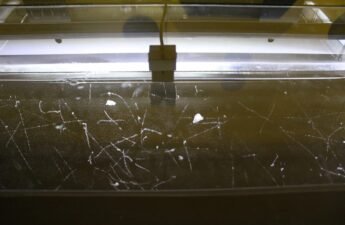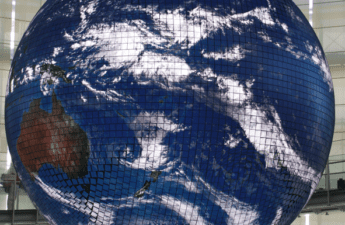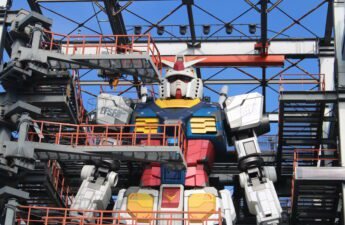I visited a unit of TAMAR project, in Florianópolis, capital of Santa Catarina state, Brazil. In this post, it is shown this unit’s visitation center. What is shown here is not everything the center has.
What is TAMAR project?

Is an organization for conservation of sea turtles and other species in the Brazilian shore. Was created in 1980 by the Brazilian Institute of Forest Development (IBDF), the later become the IBAMA (Brazilian Institute of Environment). The name TAMAR is an abbreviation of tartaruga marinha (sea turtle). Other TAMAR activities are: applied research, measures to reduce capture and fishing of turtles and environmental education.
The turtles
In the entrance of visitation center, there are real size replicas of turtles species from Brazilian shore. The presented species are: leatherback turtle (Dermochelys coriacea), hawksbill turtle (Eretmochelys imbricata), loggerhead turtle (Caretta caretta) and green turtle (Chelonia mydas) respectively.




This is the olive ridley turtle (Lepidochelys olivacea), likes to eat fishes, jellyfishes and shrimps. Can stay 30 minutes underwater without breath. It is present in Atlantic, Pacific and Indic oceans. Has average weight of 42 kg and maximum length of 83 cm.

This is the hawksbill turtle, it is critically under threat of extinction. Is found in tropical seas, coral reefs and shallow coastal water. It feeds from squids, shrimps, sponges and anemones. It’s shell was used to make combs, jewelry and spectacle frames. Has average weight of 86 kg and maximum length of 110 cm.


This is the loggerhead turtle. Is found in tropical and temperate seas all over the world. It’s jaw can crush sea shells and fishing is the greatest threat to this species. Has an average weight of 140 kg and maximum length of 136 cm.


This is a replica of a sea turtle nest. A sea turtle spawn approximately 120 eggs and the later stay from 45 to 60 days of incubation. Takes around 3 to 4 days to the offspring leaves the egg and reach the surface.

Skeletons
This is a bottlenose dolphin skeleton.

An olive ridley turtle skeleton.

The shell of an amazon turtle.

Results
The TAMAR project is one of the most successful in the world. The number of offspring born increased a lot since 1980.

The number of nests per year also increased notably.



One of the secrets of TAMAR project was to change the economic activity of communities. Before they fished the turtles, now sustain themselves with turtle preservation.
Curiosities about the sea turtles
- The male turtle has a bigger tail than the female and has claws in the flippers to hold the female during the mating.

- One cause of turtle’s death is plastic in oceans. The turtle eats a plastic bag thinking it is jellyfish and is asphyxiated.
- The turtle’s sex is defined at 15 years old.
- At 30 years old, the turtle returns to the beach where it was born. How is it oriented? Inside the turtle’s brain there is magnetite, with this material, the turtle is guided by Earth’s magnetic field.
- The turtle’s sex depends on the nest’s sand temperature. The temperature to born the same quantity of males and females is 28.74ºC. Above born much more females and below 27ºC born more males.
Photovoltaic generator
In this unit there is a rehabilitation center to turtles return to the ocean. In this rehabilitation center, there is a photovoltaic system with 8 solar panel modules made of polycrystalline silicon with 245 Wp (watt-peak) each.

Watt-peak is the power of solar panel when solar radiation is 1000 W/m^2. The installed area is 13.2 m^2 and the estimated annual generation is 2270 kWh. This is the generator`s inverter.

To know more about solar panels, click in the buttons below.
Solar panels (Part 1)Click here
Solar panels (Part 2)Click here



